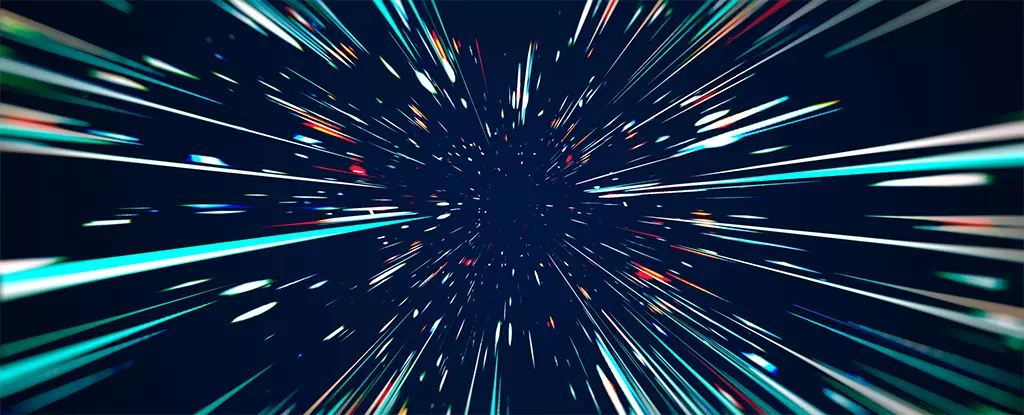The concept of warp drives has long been a fascination in the realm of science fiction, with roots in one of the most popular franchises in the genre. However, contrary to the portrayal in fictional works, warp drives do have a scientific basis according to a new paper titled “What no one has seen before: gravitational waveforms from warp drive collapse.” Physicists Katy Clough, Tim Dietrich, and Sebastian Khan from institutions in the UK and Germany delve into the science behind warp drives and contemplate the possibility of detecting gravitational waves in the event of a warp drive containment failure.
Warp drives operate on the principle of warping spacetime itself, allowing a spacecraft equipped with such a drive to traverse distances faster than the speed of light without violating the universal speed limit. The Alcubierre Drive, proposed by Mexican physicist Miguel Alcubierre in 1994, introduced a spacetime metric that theoretically supports faster-than-light travel within the framework of general relativity. Despite originating from science fiction, the concept of warp drives can be described concretely in the realm of physics.
While the theoretical foundation for warp drives exists, there are significant scientific barriers that inhibit the practical realization of such technology. Warp drives necessitate a Null Energy Condition (NEC), which stipulates that regions of space cannot possess negative energy density. Additionally, issues such as closed time-like curves and operational control within the warp bubble present formidable challenges. Understanding the physics behind warp drives is crucial in overcoming these barriers.
One intriguing aspect of warp drives lies in their potential detectability through gravitational waves. In the event of a warp drive bubble collapse, the emission of gravitational waves with distinct characteristics could provide insight into the failure of the containment field supporting the warp bubble. The collapse of a warp drive bubble generates gravitational waves that differ from signals produced by binary mergers, presenting a unique signature that may be identifiable through advanced detection mechanisms.
While the feasibility of warp drives remains theoretical at present, ongoing research and exploration into the science behind this concept may pave the way for future advancements in propulsion technology. The prospect of utilizing warp drives for interstellar travel and exploration raises intriguing possibilities for humanity’s future endeavors in space. Although numerous challenges must be addressed before warp drives become a practical reality, the pursuit of knowledge and innovation in this area represents a bold frontier in scientific exploration.
The notion of warp drives as a method for traversing the cosmos at speeds surpassing the limitations of conventional propulsion systems is a fascinating concept that blends science fiction with tangible scientific principles. While the practical implementation of warp drives presents significant hurdles, the exploration of their theoretical underpinnings and potential detectability through gravitational waves offers a glimpse into the realm of advanced propulsion technologies that may shape the future of space exploration. As humanity continues to push the boundaries of scientific knowledge and innovation, the possibility of one day harnessing the power of warp drives to journey among the stars remains an enticing prospect for generations to come.


Leave a Reply